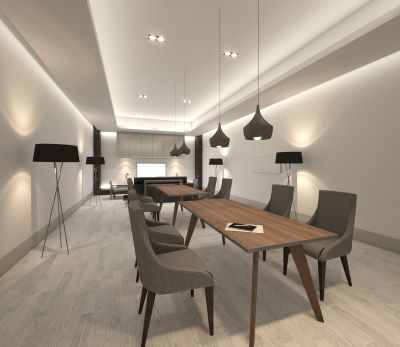Best options for installing an acoustic ceiling
Acoustic ceilings can help reduce the amount of ambient noise in public spaces such as shops, restaurants, medical facilities and offices. They can also make rooms in a private home quieter.
How do acoustic ceilings work?
They use special materials to absorb sound. You have probably noticed that some rooms in a home may sound “empty” even when they are furnished. This is because the walls and ceiling do not absorb sound, so you can hear echoes caused by sound waves bouncing off the hard surfaces.
These harsh sounds are not an issue in rooms with acoustic ceilings.
The most common type of acoustic ceiling is a drop ceiling with sound-absorbing tiles. This type of installation has the added benefit of covering up the building’s infrastructure (wires, pipes, ducts, etc) because it is installed below the ceiling frame.
A less common option is to fasten sound absorbing materials directly onto the existing ceiling. This is usually done when there is not enough room to install a suspended ceiling.
An added benefit of acoustic ceilings is that the sound-dampening material has insulative properties. This added layer of insulation could work to lower heating and cooling costs.
Stretch ceilings
Another option is a micro-perforated stretch ceiling. These are made up of fabric-like materials that are stretched across the ceiling. Because of their makeup, micro-perforated stretch ceilings work to dampen sound just like thicker acoustic ceilings.
Reflexio Design provides a micro-perforated stretch ceiling using a vinyl-based synthetic material. This membrane, available in multiple colors, is stretched over the entire room and fastened to a frame on the walls. Because of the state-of-the-art technology, this ceiling keeps sound from bouncing off the rooms surfaces and creating echoes and noises. Like a drop ceiling, Reflexio’s micro-perforated stretch ceiling can greatly enhance the building’s infrastructure.



